

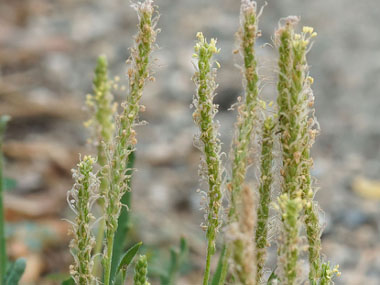
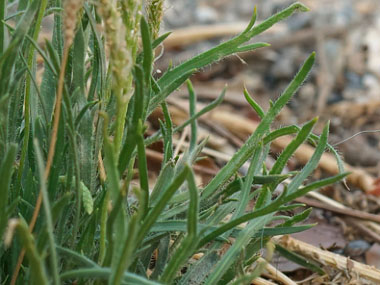
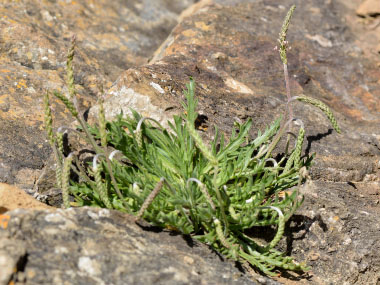
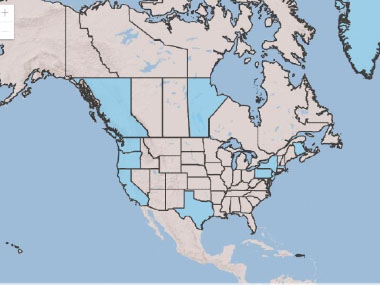
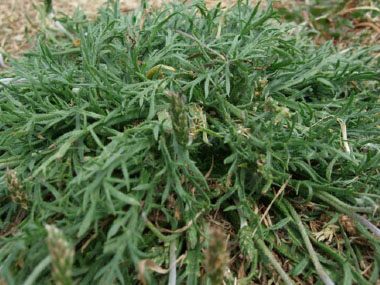
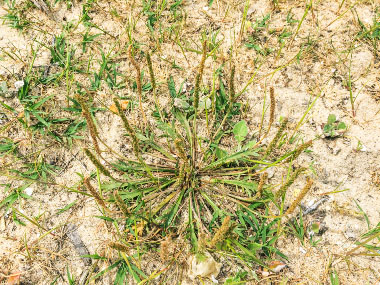
To support our efforts please browse our store (books with health benefits, etc.).
Buckshorn, or Buck's-Horn plantain is a member of the Plantaginaceae family. This plant is also known as minutina, or herba stella (in reference to an almost star-like growth formation), and Starweed. It is native to Europe, northern Africa and Central and West Asia, and has been introduced to parts of North America, South America, South Africa, Australia and New Zealand. According to Mother Earth News; "this salad green has been grown in the United States since at least Colonial times". Due to its versatility, in its natural mild-winter habitat this plant is biennial, but in areas of the U.S. and Canada where temperatures can dip below zero, it is an annual. Buckshorn plantain was first recorded in Italy in 1586 as a vegetable and was typically used in salads.
Distinguishing Features
This plantain was given Buckshorn as a common name due to the appearance; the leaves are slender and spiked with forking antler-like horns.
Flowers
The flowers are very small, white to transparent, and bloom anytime from late spring into the summer. Flowering stems are numerous from each rosette, up to 20 cm (8") high, carrying a dense spike of flowers 2 to 5 cm (.78 to 2") long. Each flower consists of four sepals, two of them are on the posterior side conspicuously keeled and hairy. Alternating with the sepals are four whitish transparent petals. The flowers are typically hermaphrodite, have four stamens with long filaments, and large yellow anthers.
 Fields
of Nutrition has medicinal benefits and vitamin/mineral content of Buckshorn Plantain.
Fields
of Nutrition has medicinal benefits and vitamin/mineral content of Buckshorn Plantain.
Leaves
Leaves are simple, and grow in a basal formation. The leaves grow only at the base of the plant. The edge of the leaf blade has lobes, or it has both teeth and lobed. Leaves are up to 20 cm (8") long by 2 cm (.78") wide. Under saline conditions the leaves may show distinct succulence.
Height
Buckhorn plantain typically spreads, but can grow upright to 20cm (8") tall.
Habitat
Typically, this species of plantago grows (in the wild) close to coastal areas. It prefers sandy or gravelly soils and cracks in rocks often in saline environments. It does well is cool, rainy areas. It has adapted well to most habitats and harsh winters.
Edible Parts
Young leaves are edible raw or cooked. This species of plantain is better tasting than most other Plantagos. Leaves are best when harvested young, as they have a taste somewhat like parsley. The flavor is best before the plant begins to flower. Flowers are also edible.
Other Name
Minutina.
Winter Survival Food Handbook

PDF Plant Magazines
Types of Wild Food
Geographic Zones Seasons
Disclaimer
EdibleWildFood.com is informational in nature. While we strive to be 100% accurate, it is solely up to the reader to ensure proper plant identification. Some wild plants are poisonous or can have serious adverse health effects.
We are not health professionals, medical doctors, nor are we nutritionists. It is up to the reader to verify nutritional information and health benefits with qualified professionals for all edible plants listed in this web site. Please click here for more information.
Why Edible Wild Food?
- Food costs are rising
- Free, wild food is readily abundant
- Wild food adds nutrition to your diet
- Wild food can help treat various medical conditions





